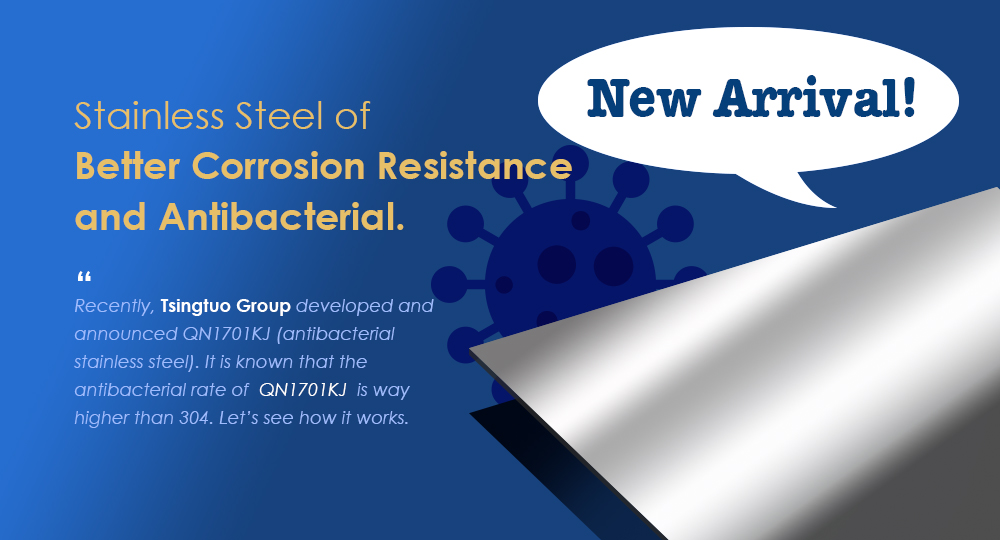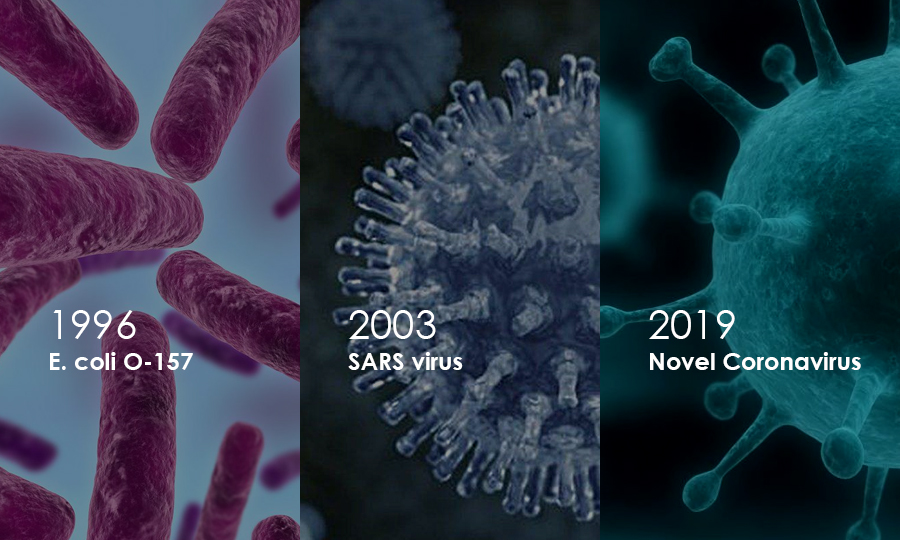
In 1996, Pathogenic Escherichia coli attacked Japan, in 2003 SARS crushed China’s health and sanitation, in 2020 COVID-19 breaks out around the world, which is never the last threat human beings face. Every crisis we have been through shall remind us of the awareness toward hygiene because living a healthy life is more than anything.
When the antibacterial material is under the spotlight, the development and promotion of antibacterial stainless steel are also on the way.
The key to antibacterial stainless steel is the base material, and so the antibacterial of raw material is crucial.
Recently, Tsingtuo Group developed and announced QN1701KJ (antibacterial stainless steel). It is known that the antibacterial rate of QN1701KJ is way higher than 304. Let’s see how it works.
The rate of antibacterial is above 99%
After the Japanese standard detection, the antibacterial rate of QN1701KJ is above 99%, which has better antibacterial property than 304.
Usually, the antibacterial test is done according to the Chinese standard GB/T 21510-2008. Testing method of antibacterial properties of nano-inorganic materials, Appendix C. Experimental methods of antibacterial properties of materials, Filming method.
The result shows that regular stainless steel such as 304, 201, and steel produced by the special copper-containing process can reach or be higher than 99% in the antibacterial rate. However, this method can not distinguish the antibacterial effects under different environments.
Compared to Chinese standard testing, the Japanese standard is strict in differentiating the antibacterial effects. QN1701KJ developed by Tsingtuo Group passes the test of Japanese standard and retains the antibacterial rate of 99% and above.
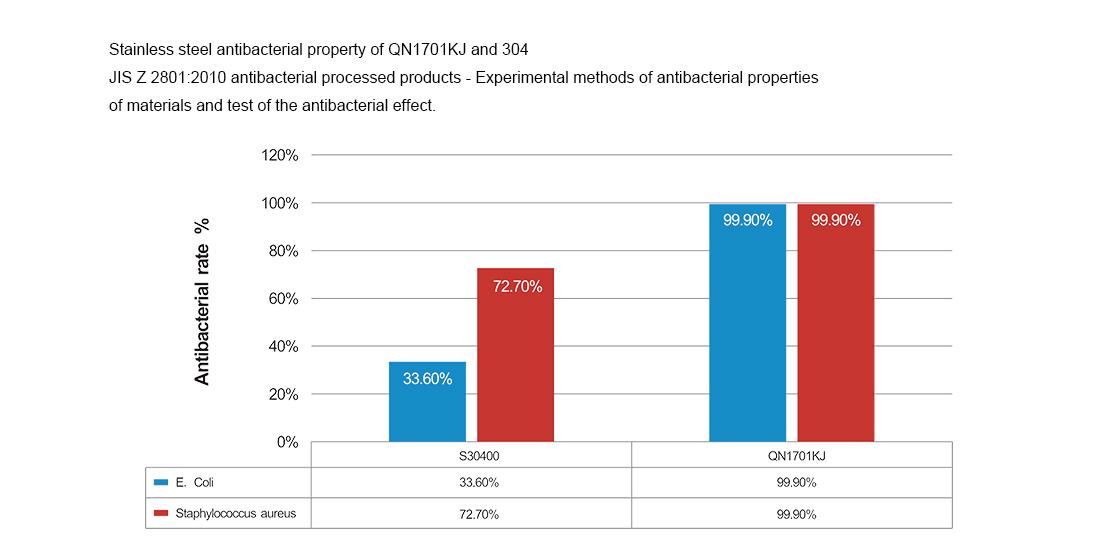
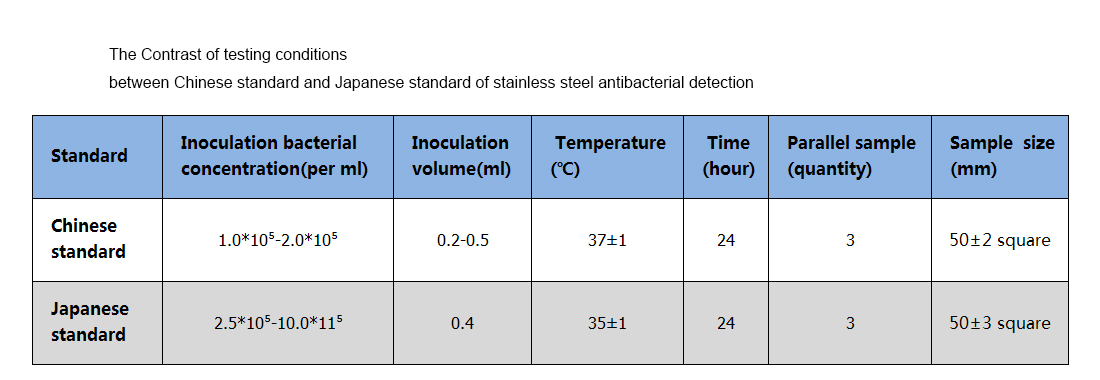
The bacterial concentration of the Chinese standard is 1.0*10, which may be the reason why regular stainless steel can gain an antibacterial rate of over 99%. Japanese standard uses a higher antibacterial concentration which is 7-9 times of Chinese standard, around 7-9*10. Under this condition, the regular stainless steel can not gain an antibacterial rate of 99%. According to Japanese standard, JIS Z 2801:2010 antibacterial processed products - Experimental methods of antibacterial properties of materials, the antibacterial rate to E. coli of SS 304 is only 33%, and the rate of Staphylococcus aureus is 70%, which shows no antibacterial effect. However, QN1701KJ is tested to reach 99.9.% in anti- E. coli and Staphylococcus aureus, which has an outstanding antibacterial property.
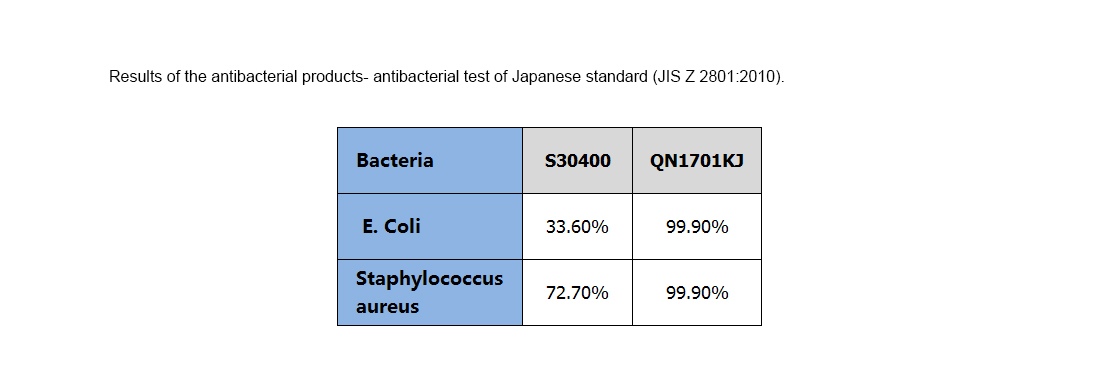
More Competitive
QN1701KJ is antibacterial and of better corrosion resistance than 202 and 430. It can tell that QN1701KJ is competitive!
1. The chemical feature of QN1701KJ is that it contains more N (N>2000ppm), Cr is no less than 16.0%, and the content of Cu is more than 0.80;
2. Greater corrosion resistance: the electric potential of pitting corrosion is higher than 202 and 430 of US standard, but the pitting corrosion rate is lower than them;
3. Better antibacterial property: based on JIS standard, the antibacterial rate reaches 99.90%;
4. High yield strength: the yield strength is over 1.4 times of 430(Q235 grade) stainless steel, surpassing carbon steel of Q355 grade.
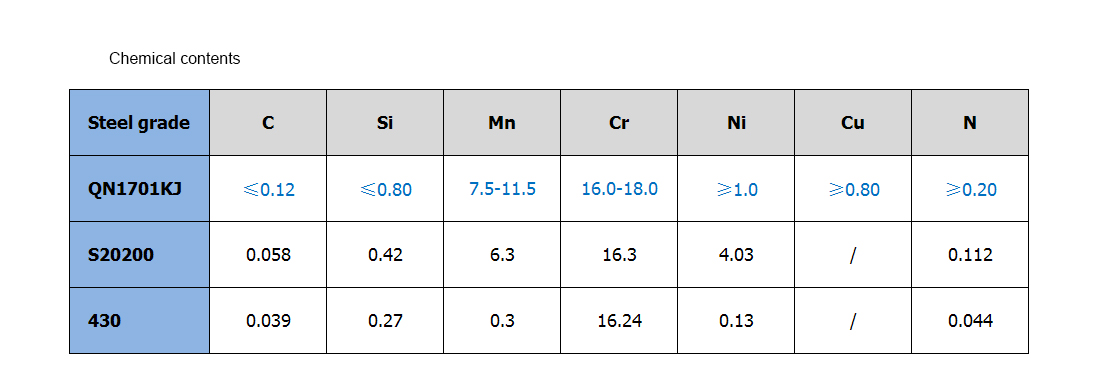
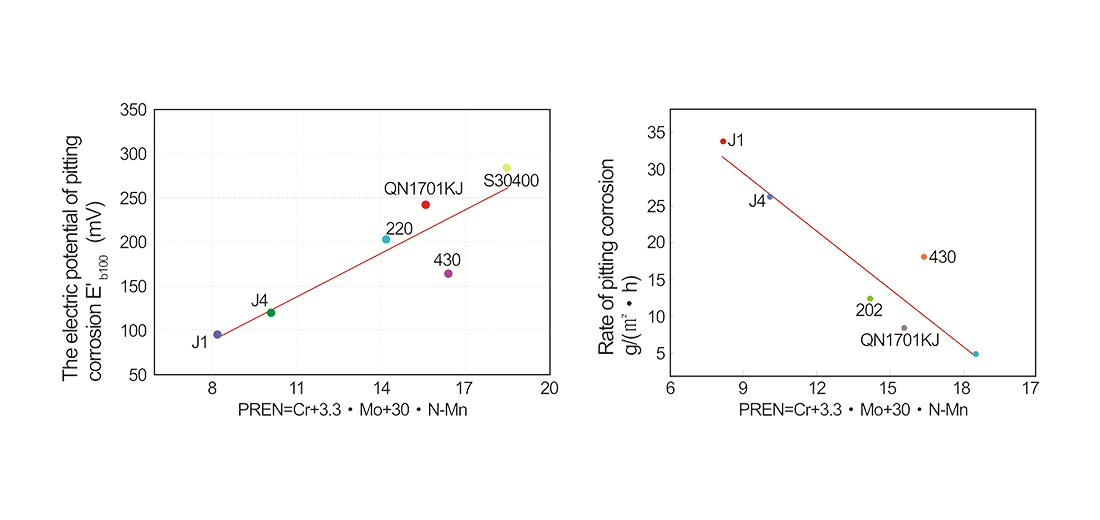
Summary
QN1701KJ stainless steel is a new material that is highly cost-effective and one of the QN series developed by Tsingtuo Group.
The corrosion resistance is better than 202 and 430 stainless steel of US standard. QN1701KJ is of higher yield strength and antibacterial property, making it more competitive than 202 and 430 stainless steel.
-----------------------------------------------------------------------------------Antibacterial Stainless Steel------------------------------------------------------------------------------------------
